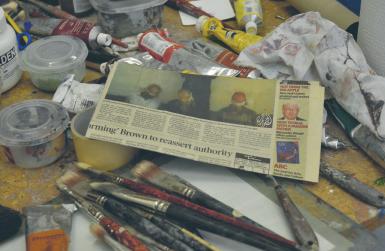Citizens of the State of Mediacy is a body of work created by Ian Wieczorek.
This work was first exhibited at Linenhall Arts Centre, Castlebar, Co. Mayo, Ireland in September 2011.
Citizens of the s tate of Media C y
What is this painting supposed to be about? This is the question we all ask ourselves in front of pictures, and struggle to answer in various ways. When we look at Ian Wieczorek’s The Phlogisticated Man we see a painting ‘of’ a blindfolded hostage, who appears to be somehow on fire. This seems to follow a very classical approach to painting, based on the aestheticisation of a figurative image, which could possibly be related to the blurred paintings of someone like Gerhard Richter. Maybe we can start with the exhibition title, Citizens of the State of Mediacy, which leads us directly to issues of citizenship, the state and the media. However, the meaning of the work perhaps becomes less clear when we realise that we are already familiar with many of the images in the show, that the paintings are in fact pictures of found images.
As the paintings clearly have some kind of relationship to photographic images, it might be useful to think about them from the point of view of photographic theory. In that case, we might try to break the picture into two: the studium, which Barthes describes as “a consequence of my knowledge, my culture”,1 and is therefore more generalised than the entirely subjective punctum - “that accident which pricks me (but also bruises me, is poignant to me).”2 In this case, clearly the studium is the figure of the hostage, that has haunted the fantasies of the West for several decades, but what the punctum is, you will have to figure out for yourself. However, the idea that there is something missing, something extra, is at the heart of the idea of the punctum, which is “a kind of subtle beyond – as if the image launched desire beyond what it permits us to see…”.3
The idea of the found image in Western art is often traced to the works of the Dadaists and Surrealists. However, the ‘spontaneous texts’ of typefounders’ specimen books of the early 19th c. “anticipate later trends in concrete poetry, cut-
1 Roland Barthes, Camera Lucida, Vintage Classics, London, 2000 (1980), p. 25.
2 Ibid., p. 27.
3 Ibid., p.59.
up writing and even performance art,” as they “had nothing in particular to say, but an overwhelming need to say it.”4 In
1906 Félix Fénéon published his Novels in Three Lines in Le Matin, condensed images in handcrafted prose that Luc Sante describes as “the first readymade”, heralding the age of mass media.5 In 1912, Fénéon, who was then running the prestigious Bernheim-Jeune Gallery in Paris, hosted the first international show of Futurist painting. Futurism aimed to reject the past and revolutionise culture, calling for an aesthetic generated by the machine, violence and speed, giving birth to the ‘creative destruction’ of modernism.6 This movement can be seen as part of what Jacques Rancière calls the transition from a representative to an aesthetic regime in the arts.7 He suggests that there were three major phases in the Western art tradition, beginning with the ethical regime, where the focus was on the image - its truth content, purpose and end result. Art gradually became more autonomous, entering the representative regime, where a focus on action and narration led to a hierarchy of genres. The aesthetic regime “strictly identifies art in the singular and frees it from any specific rule, from any hierarchy of the arts, subject matter, and genres.”8
Rancière suggests that this shift began in the failure of the French Revolution and the rise of aestheticism, and resulted in an “indifference of style with regard to subject matter”.9 This naturally led to the interest in found objects and images, the readymade approach of Duchamp, Cubist collage and Dadaist photomontage, Warhol’s recycling of pop imagery, culminating in Sherrie Levine’s copying of Duchamp’s Fountain in 1990.
4 Alastair Johnson, Alphabets to Order: the literature of nineteenth-century typefounders’ specimens, Oak Knoll Press/ British Library, Delaware/London, 2000, pp 1-2.
5 Luc Sante, ‘introduction’, in Félix Fénéon, Novels in Three Lines (trans. Luc Sante), New York Review of Books, New York, 2007, p. xxxi.
6 Filippo Tomasso Marinetti, ‘The Foundation and Manifesto of Futurism’ (1909), in Charles Harrison and Paul Wood (eds), Art in Theory 1900-2000: An Anthology of Changing Ideas, Blackwell, Oxford, 2003, pp 146-149.
7 Jacques Rancière, The Politics of Aesthetics (trans. Gabriel Rockhill), Continuum, London, 2004, esp. pp 20-30.
8 Ibid., p.23.
9 Gabriel Rockhill, ‘Translator’s Introduction’ in Rancière, The Politics of Aesthetics, pp 4-5.
Clearly there is a tension here between a picture and an image. This is perhaps a question of how a work of art exists – is it ‘in’ an object or event (immanence) or is it ‘beyond’ the object or event (transcendence)?10 In a painting, the work of art is immanent, fixed in the canvas in an ‘autographic’ manner. This can be multiplied, however, as in the case of an engraving, which still has some kind of autographic quality. There are also ‘allographic’ works, such as books or even buildings, where the reader or viewer has to extract or reduce the work from other elements – for example reading the linguistic meaning of the words, rather than focusing on the typography. Transcendence most commonly happens through a plurality of immanence – we all know the Mona Lisa, even though we may never have seen the actual picture, because we have seen the image many times. Another route to transcendence, one that is relevant here, is through plural reception:
“If a work is defined as an object of immanence plus an aesthetic function, then it must be granted that the same text, painting, score, or building, if accorded different receptions (interpretations) depending on period, culture, individual, or occasion, determines in each new context, a different work.”11
As Mitchell says, “You can hang a picture, but you cannot hang an image.”12 The image can somehow be removed from the picture, copied and made into another picture – it can even be ‘stolen’, breaching copyright law. Thus Mitchell suggests that we might look at the image as being the species, and the picture as a single specimen of it.13 The accumulation of images through the impact of new media such as the cinema, and later television and internet, has led
10 Gerard Genette, The Work of Art: Immanence and Transcendence (trans. G. M. Goshgarian), Cornell University Press, Ithaca/London, 1997. See also Gerard Genette, The Aesthetic Relation (trans. G. M. Goshgarian), Cornell University Press, Ithaca/London, 1999.
11 Genette, The Aesthetic Relation, p.x (original emphasis).
12 W. J. T. Mitchell, What Do Pictures Want? The Lives and Loves of Images, University of Chicago Press, Chicago, 2005, p.85. 13 Ibid., pp 85-94.
to what has become known as the ongoing ‘pictorial turn’ in contemporary culture.14 In this way we have perhaps created a kind of picture of the world, a ‘Spectacle’, whose ‘alpha and omega’ is separation.15 Wieczorek’s paintings represent images that are part of this currency of our everyday life, grabbed from the internet, the endless badly reproduced imagery of the virtual world. The paintings reflect the separation of appearance from its ‘truth’, a discomfort caused by “the spectacle of the suffering produced by that separation.”16 In this way, the gap between the lushness of Wieczorek’s paintings and the brutality of what superficially seems to be their content reflect this sense of their being very much ‘of the world’.
One feature of this series of paintings is their very painterliness, the blurring of the image. However, this blurring represents a deliberate and painstaking representation of the original poor quality ‘shorthand’ digital image. Such images gain credibility not from the indexical trace of the presence of ‘truth’ on the film in a traditional photograph, but from their very gaucheness and inarticulacy, their disruption of the traditions of representation. Georges DidiHuberman explained imperfections in some of Fra Angelico’s frescos as purposely introduced disturbances that could help a believer to visually “move away from the visible”,17 as the “primary virtue of dissemblance consists of imitating, not the aspect but the process.”18 This can be related to Barthes’ concept of the punctum, the wound that makes us really feel. Discussing Richter’s work, Hawker argues that “the photographic as affect can only be achieved in painting through non-resemblance and what cannot be seen – the very opposite conditions to those feted by photography as
14 David Crow, Left to Right/the cultural shift from words to pictures, AVA, Lausanne, 2006.
15 Guy Debord, The Society of the Spectacle (trans. Donald Nicholson-Smith), Zone Books, 1994 (1967), p.20.
16 Jacques Rancière, The Emancipated Spectator (trans. Gregory Elliott) Verso, London, 2009, p.7.
17 Georges Didi ‐ Huberman, Fra Angelico: Dissemblance and Figuration , The University of Chicago Press, Chicago, 1995, p.224.
18 Ibid., p.96.
medium and discipline.”19 This recalls the figurative distortions of an artist like Francis Bacon, whose visceral impact is achieved through separating appearance from figurative ‘truth’, through dissemblance. However, a distinction needs to be made here between Richter’s practice which effectively ‘makes’ a photograph, articulating “painting as essentially photographic, as communicated by the blur and its functioning”,20 and Wieczorek’s method, which is to recreate in painting the post-photographic qualities of digital images.
This returns us to the issue of the image itself, and what it perhaps wants. Mitchell seeks to use vitalism as an analogy that helps to produce questions about images and pictures. In particular, this can lead to a distinction between the vitality of an image and its value – whether this picture is a valuable representation of this image.21 If an image is alive, it may even have desires – such as “to transfix or paralyze the beholder, turning him or her into an image for the gaze of the picture in what be called “the Medusa effect.”22 The point here is that images are not actually that powerful, as if we fail to pay attention they remain ‘inert’. “If the power of images is like the power of the weak, that may be why their desire is correspondingly strong: to make up for their actual impotence.”23 Boris Groys echoes elements of this theme in his argument that this very weakness is a strength of art, pointing to what he calls ‘weak universalism’, art transcending our chronic lack of time. He suggests that the weak gesture “must be repeated time and again to keep the distance between the transcendent and the empirical visible – and to resist the strong images of change, the ideology of progress, and promises of economic growth.”24 He contrasts this imagery, produced in what Wieczorek calls the ‘State of Mediacy’,
19 Rosemary Hawker, Blur: Gerhard Richter and the photographic in painting, PhD Thesis, School of English, Media Studies and Art History, University of Queensland, 2006; abstract online at http://espace.library.uq.edu.au/view/UQ:158803 [accessed 28/4/2010].
20 Ibid.
21 Mitchell, What Do Pictures Want?, p.90.
22 Ibid., p.36.
23 Ibid., pp 33-34.
24 Boris Groys, Going Public, Sternerg Press, Berlin, 2010, p. 116.
the digital realm “characterized by the mass production and placement of weak signs with low visibility” to the “mass contemplation of strong signs with high visibility, as was the case during the twentieth century.”25 Debord’s Spectacle may in fact be fragmenting into a pixellated haze, as everybody posts images that virtually no one looks at. Thus rather than being citizens, perhaps these new weak images are refugees from the Spectacle. If so, what rights might they have?26
However, it is important to remember that the ‘vitality’ or otherwise of images remains a metaphor, albeit one that may be useful in terms of the production of questions about paintings. It can lead us into several traps, not least the ‘charlatanism’ of expression27 and a confusion of description with explanation.28 It leads us back to the picture, though, and its ‘attempts’ to freeze the image. These paintings by Ian Wieczorek combine autographic immanence with an aesthetic function far removed from the original intention behind the making of the images, thus creating a new work of art from them. The focus then comes on the picture itself, not the image, enabling us to think about the politics of the fragmenting Spectacle – perhaps the only rational procedure left for thinking about painting in the contemporary world.
Dr. John Mulloy
Dr John Mulloy is a Lecturer in Art History and Critical Theory in the Galway Mayo Institute of Technology.
25 Ibid., p.117.
26 See Chapter 3 of Jacques Rancière, Dissensus: On Politics and Aesthetics (trans. Steven Corcoran), Continuum, London, 2010, pp 62-75 for a discussion on rights and the weak.
27 Hannah Arendt, The Human Condition, University of Chicago Press, Chicago, 1958 (2nd Ed), p. 323, n.87.
28 David Deutsch, ‘A New Way to Explain Explanation’, TEDGlobal 2009, online at http://www.ted.com/talks/david_deutsch_a_new_ way_to_explain_explanation.html [accessed 8/7/2011].
Bibliography
Arendt, Hannah, The Human Condition, University of Chicago Press, Chicago, 1958 (2nd Ed).
Barthes, Roland, Camera Lucida, Vintage Classics, London, 2000 (1980).
Crow, David, Left to Right/the cultural shift from words to pictures, AVA, Lausanne, 2006.
Debord, Guy, The Society of the Spectacle (trans. Donald Nicholson-Smith), Zone Books, 1994 (1967).
Deutsch, David, ‘A New Way to Explain Explanation’, TEDGlobal 2009.
Didi‐Huberman, Georges, Fra Angelico: Dissemblance and Figuration, The University of Chicago Press, Chicago, 1995.
Fénéon, Félix, Novels in Three Lines (trans. Luc Sante), New York Review of Books, New York, 2007.
Genette, Gerard, The Work of Art: Immanence and Transcendence (trans. G. M. Goshgarian), Cornell University Press, Ithaca/London, 1997.
‐ The Aesthetic Relation (trans. G. M. Goshgarian), Cornell University Press, Ithaca/London, 1999.
Groys, Boris, Going Public, Sternerg Press, Berlin, 2010.
Hawker, Rosemary, Blur: Gerhard Richter and the photographic in painting, PhD Thesis, University of Queensland, 2006.
Johnson, Alastair, Alphabets to Order: the literature of nineteenth-century typefounders’ specimens, Oak Knoll Press/ British Library, Delaware/London, 2000.
Marinetti, Filippo Tomasso, ‘The Foundation and Manifesto of Futurism’ (1909), in Charles Harrison and Paul Wood (eds), Art in Theory 1900-2000: An Anthology of Changing Ideas, Blackwell, Oxford, 2003.
Mitchell, W. J. T., What Do Pictures Want? The Lives and Loves of Images, University of Chicago Press, Chicago, 2005.
Rancière, Jacques, The Politics of Aesthetics (trans. Gabriel Rockhill), Continuum, London, 2004.
‐ The Emancipated Spectator (trans. Gregory Elliott) Verso, London, 2009.
‐ Dissensus: On Politics and Aesthetics (trans. Steven Corcoran), Continuum, London, 2010.
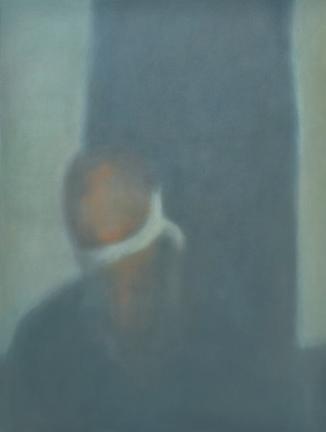
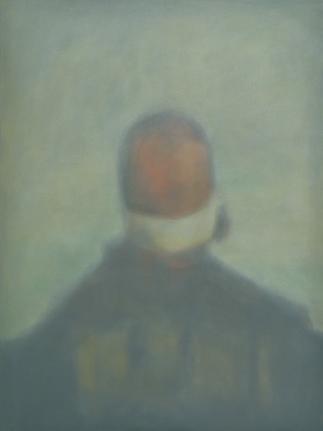
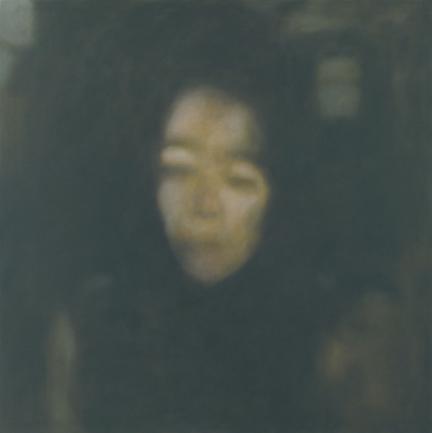
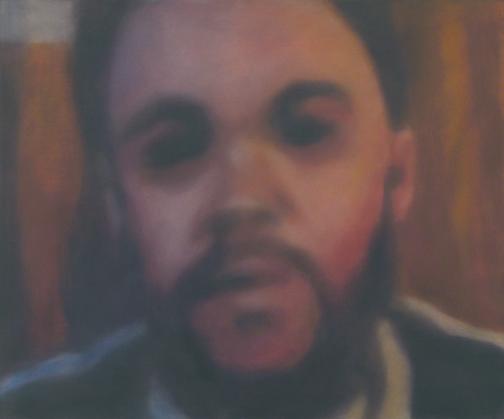
aRtist stateMent
From its inception in the 1830s, the medium of photography rapidly established primacy in the realm of visual documentation, based in no small part on the perceived ability to faithfully record reality due to the mechanical nature of its process.1 While technological development has sought to improve and refine the quality of this recording process, the past 20 years has seen a new strain of photographic idiom: a digitally mediated form in which internal integrity of image has become subordinate to ‘message content’. It is as likely to see a low resolution image lifted from the internet illustrating a news story or newspaper headline as it is to see a ‘professional’ photographic image fulfilling the role. The mobile phone capture or video still has to a major degree supplanted high quality imagery as the vernacular of reportage and societal experience. In the contemporary idiom, imagery has become a form of ‘shorthand’, illustrative rather than exhaustive, and even more subservient to the vagaries of personal interpretation than in former times.2
This digitally mediated dissemblance, where meaning and interpretation shift away from the specific towards the openended or Pluralistic, is at the core of this body of work. Low resolution portrait-style images sourced from the internet or newspapers are rendered in oils on canvas, a process that attempts to instate them within the traditional canon.
The images are presented without reference to their original sources, and the faithful rendering of the found imagery, complete with inherent digitally mediated imperfections, results in works that transcend their original journalistic intentions. Residual, ephemeral and ghostly, they become objects of contemplation open to broader interpretation, assuming more malleable, subjective significance.
Ian Wieczorek
1 Michael Schwab, Figuration in Artistic Research Practice (conference paper), Creative Practice, Creative Research, St. John University, York, 2009.
2 As William J. Mitchell observes, “images are no longer guaranteed as visual truth - or even as signifiers with stable meaning and value.” William J. Mitchell, The Reconfigured Eye: Visual Truth the Post-Photographic Era, MIT Press, Massachusetts,1992.
shoRt BioGRaPhy
Ian Wieczorek was born in England, and has lived and worked in Co. Mayo, Ireland since 1992.
He completed a BA in Fine Art at GMIT, Castlebar, Co. Mayo in 2008.
His art practice is based primarily in painting and drawing, and more recently curation.
Since 2003 he has exhibited widely in group/selected shows in Ireland (including IONTAS 2005; COE/Claremorris Open Exhibition 2009; and CCA:RDS Collective Contemporary Art 2010), N. Ireland, Germany (Kornhäuschen, Aschaffenburg, and turn-berlin gallery, Berlin) and China (411 Galleries, Hangzhou, China Central Academy of Fine Art Gallery, Beijing and Eastlink Gallery, Shanghai).
In recent years he has curated a number of shows, most recently BLINK, the Visual Art programme and Art Trail for Westport Arts Festival, in 2010.
He has been based in Custom House Studios in Westport since 2007.
solo exhibitions
2012 The Market Place Theatre and Arts Centre, Armagh City, Co. Armagh, N. Ireland (forthcoming).
2012 Custom House, Westport, Co. Mayo, Ireland (forthcoming).
2011 Citizens of the State of Mediacy, Linenhall Arts Centre, Castlebar, Co. Mayo, Ireland.
2010 UNFIXING, Courthouse Gallery, Ennistymon, Co. Clare, Ireland.
2009 DIS / locate, Custom House, Westport, Co. Mayo, Ireland.
2009 convergence, Upstairs Gallery, Watergate Theatre, Kilkenny City, Co. Kilkenny, Ireland.
2008 interstitial, Patrick Street Gallery, Cork City, Co. Cork, Ireland.
2006 Intervention/Reinvention, Custom House, Westport, Co. Mayo, Ireland.
